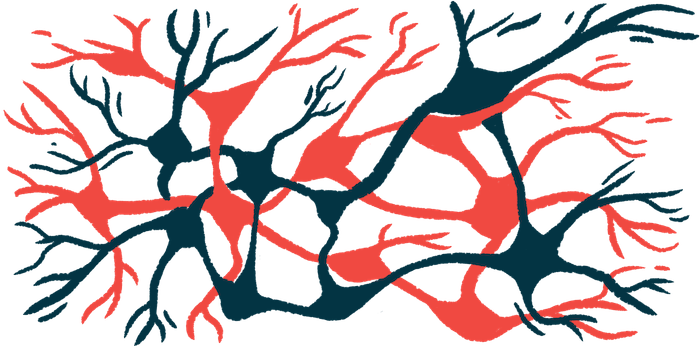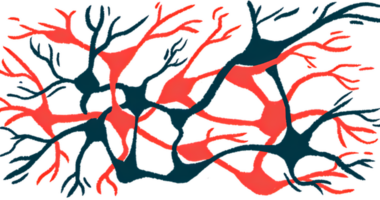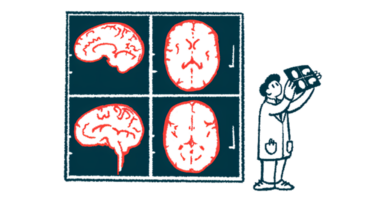RNA-editing enzyme may be novel treatment target in Parkinson’s
Dysregulation of RNA editing in astrocytes induces chronic inflammation: Study

The dysregulation of RNA editing within astrocytes (neuron-supporting cells) seems to induce chronic inflammation and ultimately contributes to the loss of nerve cells in people with Parkinson’s disease, according to a recent study.
This dysregulation is triggered by alpha-synuclein clumping, which is a characteristic feature of Parkinson’s.
RNA editing refers to changes in the sequence of messenger RNA — the intermediate molecule derived from DNA that guides protein production — that may alter protein expression and be involved in disease mechanisms.
Particularly, researchers demonstrated that RNA editing mediated by ADAR1, an enzyme that is associated with astrocyte immune responses, may be involved in disease progression, and that ADAR1 could serve as a novel genetic target for Parkinson’s treatment.
‘Completely different therapeutic strategy from existing approaches’
“This study demonstrates that the regulator of inflammation caused by protein aggregation operates at the new layer of RNA editing, offering a completely different therapeutic strategy from existing approaches to Parkinson’s disease treatment,” Minee L. Choi, PhD, professor at Korea Advanced Institute of Science and Technology, or KAIST, and co-first author of the study, said in an institute press release.
The study, “Astrocytic RNA editing regulates the host immune response to alpha-synuclein,” was published in Science Advances.
Parkinson’s disease is caused by the progressive loss of dopaminergic neurons, or the nerve cells that produce dopamine, which is a chemical messenger involved in motor control. Accumulation of alpha-synuclein clumps in the brain, as well as brain inflammation (also referred to as neuroinflammation), are thought to contribute to neuronal death.
Additionally, evidence suggests the dysfunction of astrocytes, which are essential for neuronal function and survival, may contribute to Parkinson’s progression. Specifically, reactive astrogliosis, a process by which astrocytes undergo structural and functional changes in response to disease or inflammation, has been identified in neurodegenerative conditions.
In the study, researchers at KAIST, in South Korea, together with colleagues at University College London and The Francis Crick Institute, generated astrocytes and neurons derived from human induced pluripotent stem cells (iPSCs). iPSCs are obtained from fully mature cells that are programmed back to an embryonic-like state, where they can generate nearly all cell types, including neurons and astrocytes.
Cultured cells, either neurons or astrocytes alone, or both cells together, were treated with alpha-synuclein oligomers, which are small, soluble clumps of the alpha-synuclein protein that are particularly toxic to neurons. Gene expression was then analyzed by RNA sequencing. This technique is used to quantify gene levels through messenger RNA.
Causing astrocytes to acquire inflammatory profile
The researchers found that treatment with alpha-synuclein oligomers caused astrocytes to acquire an inflammatory profile. Particularly, they found alpha-synuclein treatment increased the levels of 917 genes and decreased the levels of 1,087 genes.
Upregulated genes were especially associated with toll-like receptor activation and antiviral inflammatory responses, with treated astrocytes releasing proinflammatory cytokines such as TNF-alpha, interferon-gamma, interleukin (IL)-1 beta, IL-6, and IL-13.
Additionally, treatment with alpha-synuclein oligomers increased neuron death, both when neurons were cultured alone or with astrocytes. In astrocytes and astro-neuronal cultures, the activation of interferon response pathways led to the upregulation by about 1.8 times of the RNA deaminase enzyme ADAR1, and its switch toward a more inflammatory profile.
The gene-editing activity of ADAR1 normally functions to regulate immune responses during viral infections, by converting adenosine (an RNA building block) to inosine, a process known as A-to-I RNA editing. This change is abnormally focused on genes that cause inflammation and was observed in patient-derived neurons and tissues from people diagnosed with Parkinson’s.
“Aberrant, or dysregulated, ADAR1 responses and RNA editing may lead to sustained inflammatory reactive states in astrocytes triggered by alpha-synuclein aggregation, and this may drive the neuroinflammatory cascade in Parkinson’s,” the researchers wrote.
Such mechanisms may also be activated by viral infections, believed to be associated with a higher risk for Parkinson’s.
Overall, “RNA editing technology could become an important turning point in the development of therapeutics for neuroinflammation,” Choi said.







